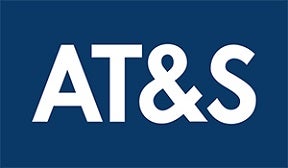Established in 2022, the Innovation Award Styria honours the best projects of Styrian companies and research institutions. The prize is awarded by the Styrian Business Promotion Agency SFG in cooperation with the Department of Economic Affairs of the Province of Styria. Around 100 Styrian companies and institutions took their chance in the competition of the best and applied with their projects. With an innovative solution for miniaturised, flexible printed circuit boards, AT&S was able to claim the premiere victory in the digitalisation category.
In Austria alone, 1.8 million people suffer from impaired hearing, only about 400,000 of whom wear hearing aids. This is also due to the poor reputation of previous hearing aids, which were often of only limited help in everyday noise situations and were also large, conspicuous and clunky.
Modern miniaturised hearing aids carry numerous microchips. They communicate with smartphones and cars and will soon translate conversations simultaneously. It is at the intersection of these trends – miniaturisation versus increasing complexity – that AT&S’ now award-winning innovation comes into play. The company has developed a miniature printed circuit board made of special materials that simultaneously solve the problems described. The system of flexible printed circuit board and attached adapter mini-board is compact and gives manufacturers maximum freedom. Further miniaturisation for future technical requirements is already planned.
The AT&S innovation
The innovative AT&S solution uses a fingernail-sized substrate-like printed circuit board made of temperature-stable epoxy resin composite material that is only 0.25mm thick. This miniature circuit board can accommodate several high-performance microchips and permits the smallest connections and structures. The use of thermally insensitive materials avoids problems caused by heat-related deformation when soldering the many contacts. The PCB is manufactured as a complete package in conjunction with a flexible PCB that contains less sensitive structures. This package of two PCBs is extremely compact and allows for cost-efficient production of high-end systems.
“Our mini-conductor board is currently used primarily in hearing aids,” explains Hannes Voraberger, Director R&D at AT&S. He continues: “The technology enables further miniaturisation for future developments in hearing aids; for example, speech recognition or simultaneous translation through artificial intelligence. But other medical applications such as pacemakers, neuro-implants, or insulin pumps can also benefit from the innovation.”
For AT&S CEO Andreas Gerstenmayer, the award once again demonstrates AT&S’ innovative strength: “We use it to make complex electronics feasible in the smallest of spaces; the lower weight and reduced material consumption also protect the environment and resources, while making devices more inconspicuous and comfortable for wearers. Projects like this demonstrate the innovative strength of our engineers. AT&S’ success is based to a large extent on the ability of our employees to develop new, creative solutions in order to be able to make attractive offers to our customers. Highly trained specialists and engineers, thus form the foundation for A&TS’ past and future corporate development,” said Gerstenmayer.

